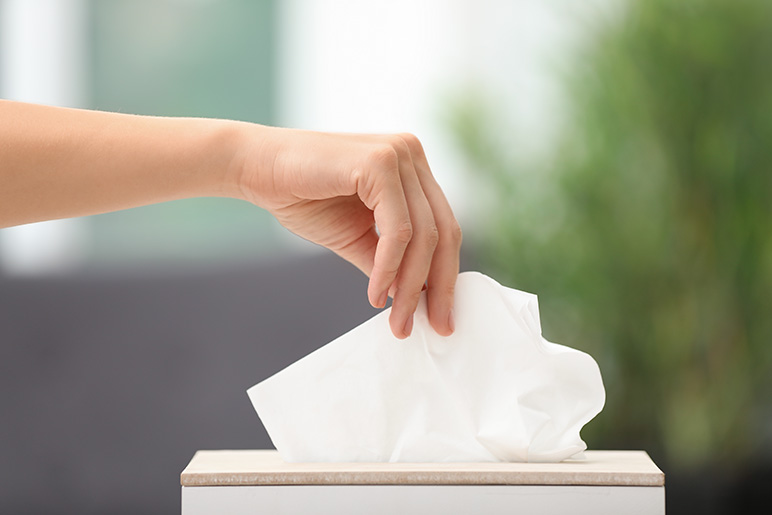bf1e605e32056b8a9f2eff03000bf66e.jpg?sfvrsn=721b0bba_0)
MEET THE AGENCY
bf1e605e32056b8a9f2eff03000bf66e.jpg?sfvrsn=721b0bba_0)
Inside Story

As the seasons shift from summer to autumn, many Hoosiers brace for itchy eyes, sneezing bouts and other symptoms associated with fall seasonal allergies. In Indiana’s fall air, ragweed pollen, mold spores and excess moisture can create a pretty potent mix for allergy sufferers. By following these tips and strategies to manage fall allergies in Indiana, you can reduce symptoms and truly enjoy this cool, colorful season.
Ragweed pollen is the arch-nemesis of many fall allergy sufferers. Ragweed starts pollinating in late summer and can continue until the first frost. The pollen is extremely lightweight and can travel hundreds of miles. Warm, windy days typically result in high pollen counts, and midday is typically when conditions are worst. Since ragweed is so light and fine, it can even impact people indoors.
Mold is another pesky participant in the fall seasonal allergy game. According to Reid Health, located in Richmond, leaves that dry out and die in the fall release mold into the air. As rain and moisture increase, so does the growth of mold. If that wet period is followed by a dry spell, that’s when the spores are released into the air.
Finally, your own indoor environment may cause you grief in the cooler months. You might unknowingly trap allergens inside your home! As you start to leave your windows closed and kick on the heat, the heating, ventilation and air conditioning (HVAC) system can spread dust, pet dander and pollen throughout the house, resulting in increased allergy symptoms.
Monitor pollen and mold forecasts
Check your local pollen forecast each day. When ragweed or mold spore levels are high, try to stay indoors when allergens are worst, usually midday. The Weather Channel and Kleenex both provide online pollen forecast tools.
Insist on indoor allergen prevention
The Asthma and Allergy Foundation of America website is full of great tips to control indoor allergens. One easy way to reduce allergens is to keep areas that are sources for allergens like carpeting, soft furniture, bedding and indoor plants clean. You can also protect your indoor space by keeping windows and doors closed on high pollen days, using air filters and running a dehumidifier to reduce the potential for mold.
Clean up after being outdoors
Pollen can hitch a ride on your clothes, shoes, hair and skin. If you’ve been working outside or just enjoying the fall weather, take some precautions when you come back inside. Remove your outer layers and wash your hands. If your allergies are severe, Eskenazi Health recommends showering frequently to remove pollen from skin and hair.
Know your triggers and plan accordingly
Once you know what allergens give you the most grief, you can start to put preventative measures in place. If the pollen forecast is showing a high-pollen day, pack your medicine or take it preemptively. Reid Health also suggests stocking up on supplies before you might need them. So, pick up air filters or a vacuum cleaner with a HEPA filter to help you fight off allergies this fall.
Control what you can
Lutheran Health Network (LHN), based in northeast Indiana, highlights the importance of healthy lifestyle choices and general wellness. It’s much easier to ward off allergy symptoms if your immune system is strong. LHN’s advice includes eating nutrient-rich foods, staying active and staying hydrated. Your body will thank you!
The American College of Allergy Asthma and Immunology recommends booking an appointment with an allergist if your over-the-counter medications aren’t helping, you develop new symptoms or if your symptoms intensify.
You don’t have to dread fall allergy season in Indiana. Try incorporating some of these tips into your life to see if you can find some relief this year!
Contact Us